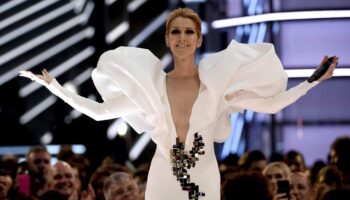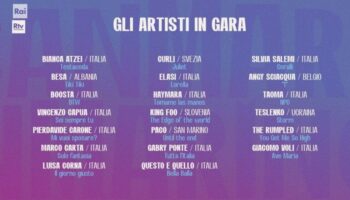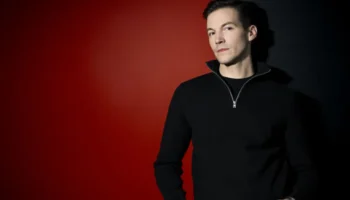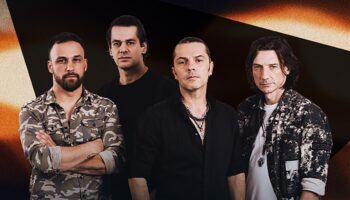For the first time in many years Melodifestivalen was again transmitted live and have been ever since 1980.
During this period at lot of the classical Swedish Eurovision sound is developed with songs like, ABC, Främling, Diggi loo Diggy ley, Dansa i neon, Kärleken är evig, Eldorado and manuy many more. Several of todays bic artists in Sweden is getting their breakthroughs. Sweden also win the Eurovision for a second time and is almost every year ranked in top 10 at the Eurovision.
1980 A new process for selecting the songs was introduced. Everyone could send in songs but from now on the songs should be sent in to any of the record companies that was a member of SMFF (Swedish Music Publisher Association). The record companies then had a fixed number of songs they could submit to SVT for further judgement. The fixed number of songs was determined by the size of the record company. This changes was reflected in the competing artists which was dominated by already established artists. One of the most talked about was Kenta who actually was a guy with serious drinking and drug problems that had been on a documentary called "De kallar oss mods" on SVT. He didn´t sing very well but has been remembered for his t-shirt saying "69 Try it you like it" with a picture of two people in a 69 act. Tomas Ledin won finally on his 5th try to represent Sweden. Tomas went to The Hague with his song "Just nu" (Right now) and finishes as no 10.
In 1981 Melodifestivalen was again part of another tv-show as it had been back in 1971 Another selction process was introduced. SVT invited the 5 most successful composers from ther period between July 1979 and October 1980. And the selected was Lasse Holm, Anders Glennmark, Janne Lucas Persson, Bengt Palmers and Agneta Fältskog. The winner was once again Björn Skifs who had sung Bengt Palmers song "Fångad en dröm" (Caught in a dream). Second once again was Kikki Danielsson and Lasse Holm as they had been in 1978. At the Eurovision Song Contest in Dublin Sweden finished as no 10.
1982 Time to leave Stockholm again and go to Gothenburg. But no to Studio 1 at the Tv-centre but to Lisebergshallen. A format was introduced again. 10 songs were selected from a total of 120 (from SMFF). First all the songs was performed and then a secret voting process reduced them down to 5 and those five performed once again and then an open voting was held to deem a winner. The jury was also in Lisebergshallen so everyone could see who they were. This was the format that was used almost every year to come until 1999. The winner was Elisabeth Andreasson and Kikki Danielsson who together forms the group Chips. The first comment from Kikki Danielsson was that they won because Björn Skifs had not taken part referring to 1978 and 1981. The show was a success and Chips went to Harrogate and finishes as no 8.
For the first time Melodifestivalen was held in Malmö in 1983. The ones that did watch this edition of the contest will never forget it. The old Cinema Palace Palladium was the place were established and rookie artists fought it out. But the only song everyone in Sweden remember from this year is ofcourse "Främling" performed by a 16 year old Carola Häggkvist. Carola sang her heart out and totally crushed all resistant when she recived to top mark from all 11 juries something that has never happen again in Melodifestivalen. She became a star over one night. Carola went to Munich and now finally we would win it again. Sweden was one of the favourites at the Eurovision Song Contest. Carola finished as no 3 but she was the moral winner of the Eurovision 1983 if you ask the Swedes anyway. Her debut album sold almost 800 000 copies and is still one the most sold records in Sweden. Carola has been one of Swedens top artist for almost 25 years now. She would be back at the Eurovision for revenge some years later.
1984 after last year huge success and we were back in Gothenburg with the format as had been used the previous two years. 10 songs were selected but not so many familiar faces to sing them. Scottish John Ballard had another go and this time by himself with the song "Rendez-vous" and finished third. Elisabeth Andreasson took part with "Kärleksmagi" (Love magic) but ended up at last place, but she would be back with another song and for another country. A trio of three young men did their debut this year, they were Richard, Per and Lois Herrey and called themselves Herrey's. They sang "Diggi loo Diggy ley" to victory and the honour of representing Sweden at the Eurovision in Luxemburg. In the media they were treated almost in the same way as Abba was in 1974 and Lasse Berghagen in 1975. They had nothing positive to say at all. There were called The Dancing Deodorants, and their song was the worst kind of commercial music that could be made and that they had no chance what so ever at the European final. But we all now how wrong they all were since finally 10 years after Abba Sweden won the Eurovision for the second time but the Herrey's soon disappeared into history and never made the same breakthrough as Abba had done in 1974.
In 1985 Sweden was hosting the Eurovision Song Contest for the second time, but not in Stockholm. SVT had chosen Gothenburg as the scene for this years edition. Therefore Malmö got to host Melodifestivalen for the second time. Back in a TV-studio and a low budget version of Melodifestivalen. The studio was built like a huge disco and as you all know at discos there are no orchestra, so for the first time Melodifestivalen went singback. The same format as last year was used. And big favourite were Pernilla Wahlgren and her entry "Piccadilly Circus" but she had to satisfied with a 4th place. Danceband queen Kikki Danielsson surprised and took the victory with the catchy song "Bra vibrationer. Kikki defended the gold very well and finished third at the Eurovision seeing har old partner Elisabeth Andreasson of Chips winning for Norway.
Back in Stockholm for 1986 a big changes for Melodifestivalen were planned. The thought was to once again introduce the semi-finals as part of the popular Saturday night show "Razzel". This leaked to the press and there was a big storm were it was said the the show would loose its magic if this was to be the case. It never became reality until 2002. If 1985 had been a low budget show well 1986 was even more low-budget. This year both the orchestra and the artists disappeared or almost anyway. The 10 songs were presented with videos so the audience at Circus had paid to go and see a videocontest. But the funny thing was that jury was not allowed to see these videos thay should not be inluenced SVT thought. After the 10 videos had been played 5 finalists were chosen for the grand finale. In the second round of the evening the 5 selected artist were allowed to perform their songs live, but the music were on tape. Lena Philipsson made her debut with a song written by Per Gessle. Anna Book also made her debut this year with her classical song ABC. And the winner well it was Lasse Holm & Monica Törnell with the song "Är de det här du kallar kärlek" (If its this you say is loving). Sweden finished as no 5 at the Eurovision Song Contest in Bergen.
1987 and changes in the format again. The cooperation with SMFF was over and everyone could once again submit their songs directly to SVT in Gothenburg were the contest was held this year. 1502 entries were submitted and from those 12 were selected to take part. The orchestra was back in business as well. A big row over the artist was in the newspapers this year. Lili & Susie were selected to sing "Dansa I neon" but SVT refused and wanted Lena Philipsson instead and so it was. A band called "Pinks" had been offered to sing "Fyra bugg och en coca-cola" but since the members were around 10-12 years old SVT refused and Lotta Engberg sang the song instead. After one of the most exciting voting procedure in years Lotta Engberg won with only 1 point, on second place came Arja Saijonmaa with her classic entry "Högt over havet". At the Eurovision in Belgium Lotta finishes as no 12.
In 1988 we were back in Malmö. The format as in 1987 was used. 12 songs were selcted out of around 1100 submitted songs. A mix of newcomers and established artists was presented. Siw Malmkvist made comeback to Melodifestivalen last time she took part was in 1961. The song "Stad I ljus" was composed specially for Jan Malmsjö but he couldn´t get time off to take part so the offer went to Tommy Körberg who accepted the offer.With 84 (out a the possible 88) Tommy won Melodifestivalen and for the second time he would represent Sweden at the Eurovision, last time was in 1969. In Dublin he got a cold and perhaps that was the reason that Sweden finished as no 12 even though Tommy was considered one of the favourites to win in 1988.
Back in Stockholm in 1989 and a slight change in format again. The Globe Arena had been built and SVT wanted the final to be held there for the first time. 10000 tickets went on sale but perhaps the time was not right yet for this huge Arena only around 7000 tickets were sold. SVT decided that 10 songs was enough again, Lena Fürst executive producer also decided that all 10 songs should be voted upon not only half of them as it had been in previous years. To host the show SVT selected Miss Universe 1984 Yvonne Ryding and John Crispinson news reporter at SVT. A choice that was not very thought through one can say today. Many big names took part this year, Anders Glenmark, Orup, Lisa Nilsson, Lili & Susie and Tommy Nilsson. The standard of the songs were much better than in the past years. After a exciting voting Tommy Nilsson won with "En dag" (One day). Tommy went to Lausanne and finishes as no 4. Next week Tommy Nilsson is once again taking part in Melodifestivalen, will he get another victory in 2007?



